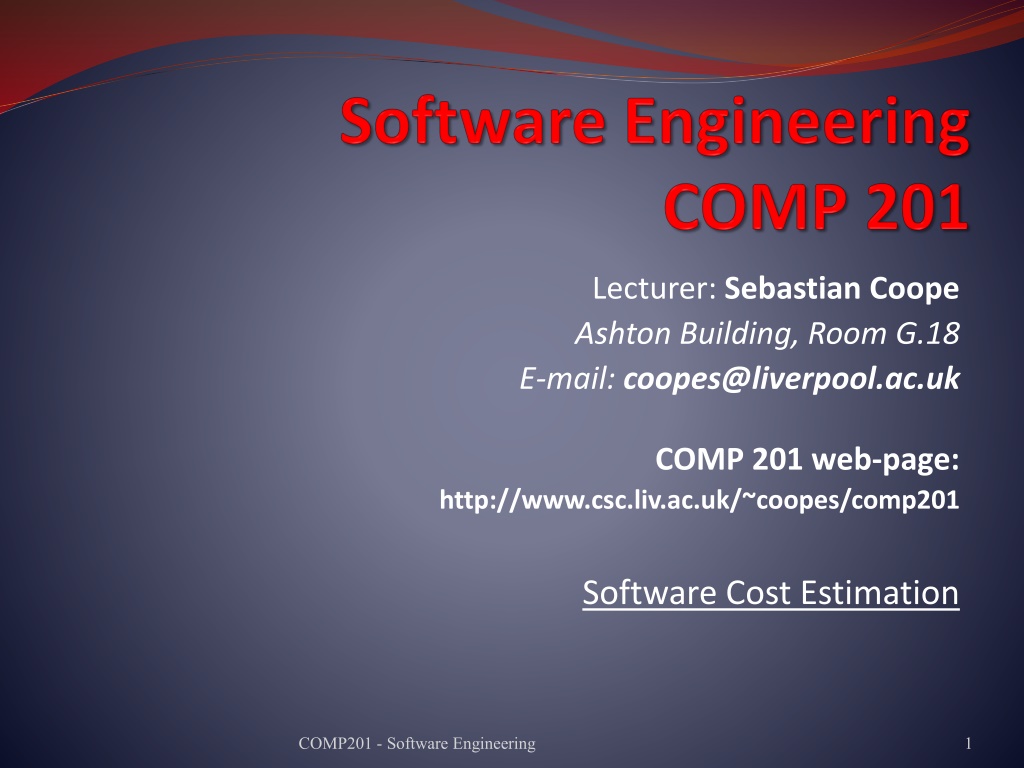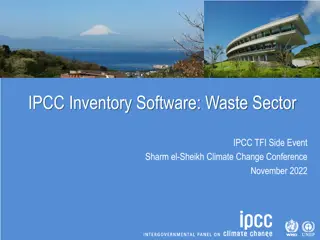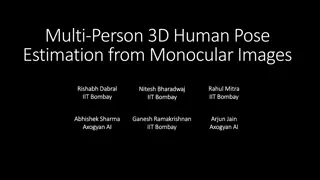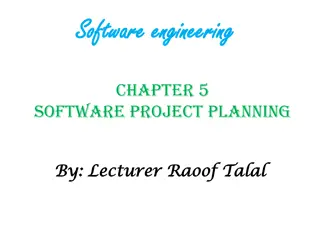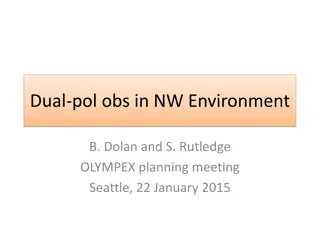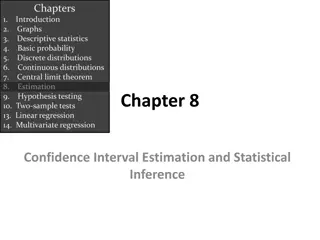Software Cost Estimation in Software Engineering
Software cost estimation in software engineering involves predicting the resources required for a software development process. It includes fundamental estimation questions, software cost components, costing and pricing considerations, software pricing factors, and programmer productivity assessment. The process encompasses effort, time, cost, and various factors influencing pricing strategies in the software development industry.
Download Presentation

Please find below an Image/Link to download the presentation.
The content on the website is provided AS IS for your information and personal use only. It may not be sold, licensed, or shared on other websites without obtaining consent from the author.If you encounter any issues during the download, it is possible that the publisher has removed the file from their server.
You are allowed to download the files provided on this website for personal or commercial use, subject to the condition that they are used lawfully. All files are the property of their respective owners.
The content on the website is provided AS IS for your information and personal use only. It may not be sold, licensed, or shared on other websites without obtaining consent from the author.
E N D
Presentation Transcript
Lecturer: Sebastian Coope Ashton Building, Room G.18 E-mail: coopes@liverpool.ac.uk COMP 201 web-page: http://www.csc.liv.ac.uk/~coopes/comp201 Software Cost Estimation COMP201 - Software Engineering 1
Software Cost Estimation Software cost estimation involves predicting the resources required for a software development process COMP201 - Software Engineering 2
Fundamental Estimation Questions How much effort is required to complete an activity? How much calendar time is needed to complete an activity? What is the total cost of an activity? Project estimation and scheduling and interleaved management activities COMP201 - Software Engineering 3
Software Cost Components Hardware and software costs Travel and training costs Effort costs (the dominant factor in most projects) salaries of engineers involved in the project Social and insurance costs Effort costs must take overheads into account costs of building, heating, lighting costs of networking and communications costs of shared facilities (e.g library, staff restaurant, etc.) COMP201 - Software Engineering 4
Costing and Pricing Estimates are made to discover the cost, to the developer, of producing a software system There is not a simple relationship between the development cost and the price charged to the customer Broader organisational, economic, political and business considerations influence the price charged COMP201 - Software Engineering 5
Software Pricing Factors COMP201 - Software Engineering 6
Programmer Productivity A measure of the rate at which individual engineers involved in software development produce software and associated documentation Not quality-oriented although quality assurance is a factor in productivity assessment Essentially, we want to measure useful functionality produced per time unit COMP201 - Software Engineering 7
Productivity Measures Size-related measures based on some output from the software process. This may be lines of delivered source code, object code instructions, etc. Function-related measures based on an estimate of the functionality of the delivered software. Function-points are the best known of this type of measure COMP201 - Software Engineering 8
Measurement Problems Estimating the size of the measure Estimating the total number of programmer months which have elapsed Estimating contractor productivity (e.g. documentation team) and incorporating this estimate in overall estimate COMP201 - Software Engineering 9
Lines of Code What's a line of code? The measure was first proposed when programs were typed on cards with one line per card How does this correspond to statements as in Java which can span several lines or where there can be several statements on one line What programs should be counted as part of the system? Assumes linear relationship between system size and volume of documentation COMP201 - Software Engineering 10
Productivity Comparisons The lower level the language, the more productive the programmer The same functionality takes more code to implement in a lower-level language than in a high-level language COMP201 - Software Engineering 11
High and Low Level Languages COMP201 - Software Engineering 12
Function Points Based on a combination of program characteristics external inputs and outputs user interactions external interfaces files used by the system A weight is associated with each of these The function point count is computed by multiplying each raw count by the weight and summing all values COMP201 - Software Engineering 13
Object Points Object points are an alternative function-related measure to function points Object points are NOT the same as object classes The number of object points in a program is a weighted estimate of The number of separate screens that are displayed The number of reports that are produced by the system The number of modules that must be developed COMP201 - Software Engineering 14
Productivity Estimates Real-time embedded systems, 40-160 LOC/P-month Systems programs , 150-400 LOC/P-month Commercial applications, 200-800 LOC/P-month In object points, productivity has been measured between 4 and 50 object points/month depending on type of application, tool support and developer capability COMP201 - Software Engineering 15
Factors Affecting Productivity COMP201 - Software Engineering 16
Quality and Productivity It could be argued that all metrics based on volume/unit time are flawed because they do not take quality into account Productivity may generally be increased at the cost of quality It is not clear how productivity/quality metrics are related If change is constant (simplifying and improving code for example) then an approach based on counting lines of code is not meaningful COMP201 - Software Engineering 17
Estimation Techniques There is no simple way to make an accurate estimate of the effort required to develop a software system Initial estimates are based on inadequate information in a user requirements definition The software may run on unfamiliar computers or use new technology The people in the project may be unknown Project cost estimates may be self-fulfilling The estimate defines the budget and the product is adjusted to meet the budget COMP201 - Software Engineering 18
Estimation Techniques Algorithmic cost modelling Expert judgement Estimation by analogy Parkinson's Law Pricing to win COMP201 - Software Engineering 19
Algorithmic Code Modelling A formulaic approach based on historical cost information and which is generally based on the size of the software Discussed later COMP201 - Software Engineering 20
Expert Judgement One or more experts in both software development and the application domain use their experience to predict software costs. Process iterates until some consensus is reached. Advantages: Relatively cheap estimation method. Can be accurate if experts have direct experience of similar systems Disadvantages: Very inaccurate if there are no experts! COMP201 - Software Engineering 21
Estimation by Analogy The cost of a project is computed by comparing the project to a similar project in the same application domain Advantages: Accurate if project data available Disadvantages: Impossible if no comparable project has been tackled. Needs systematically maintained cost database COMP201 - Software Engineering 22
Parkinson's Law The project costs whatever resources are available Advantages: No overspend Disadvantages: System is usually unfinished Parkinson s Law states that work expands to fill the time available. The cost is determined by available resources rather than by objective statement. Example: Project should be delivered in 12 months and 5 people are available. Effort = 60 p/m COMP201 - Software Engineering 23
Pricing to Win The project costs whatever the customer has to spend on it Advantages: You get the contract Disadvantages: The probability that the customer gets the system he or she wants is small. Costs do not accurately reflect the work required COMP201 - Software Engineering 24
Top-Down and Bottom-Up Estimation Any of these approaches may be used top-down or bottom-up Top-down Start at the system level and assess the overall system functionality and how this is delivered through sub-systems Bottom-up Start at the component level and estimate the effort required for each component. Add these efforts to reach a final estimate COMP201 - Software Engineering 25
Estimation Methods Each method has strengths and weaknesses Estimation should be based on several methods If these do not return approximately the same result, there is insufficient information available Some action should be taken to find out more in order to make more accurate estimates Pricing to win is sometimes the only applicable method COMP201 - Software Engineering 26
Experience-Based Estimates Estimating is primarily experience-based However, new methods and technologies may make estimating based on experience inaccurate Object-oriented rather than function-oriented development Client-server systems rather than mainframe systems Off the shelf components Component-based software engineering CASE tools and program generators COMP201 - Software Engineering 27
Pricing to Win This approach may seem unethical and unbusinesslike? However, when detailed information is lacking it may be the only appropriate strategy The project cost is agreed on the basis of an outline proposal and the development is constrained by that cost A detailed specification may be negotiated or an evolutionary approach used for system development COMP201 - Software Engineering 28
Algorithmic Cost Modelling Cost is estimated as a mathematical function of product, project and process attributes whose values are estimated by project managers Effort = A SizeB M A is an organisation-dependent constant, B reflects the disproportionate effort for large projects and M is a multiplier reflecting product, process and people attributes Most commonly used product attribute for cost estimation is code size Most models are basically similar but with different values for A, B and M COMP201 - Software Engineering 29
Estimation Accuracy The size of a software system can only be known accurately when it is finished Several factors influence the final size Use of COTS and components Programming language Distribution of system As the development process progresses then the size estimate becomes more accurate COMP201 - Software Engineering 30
